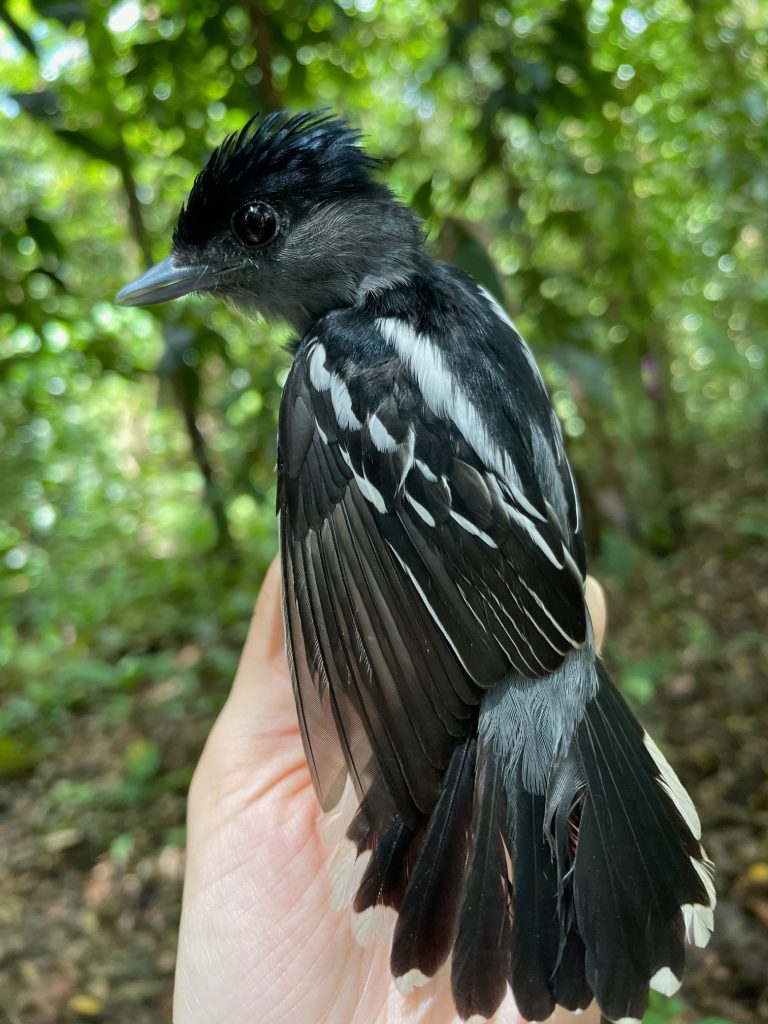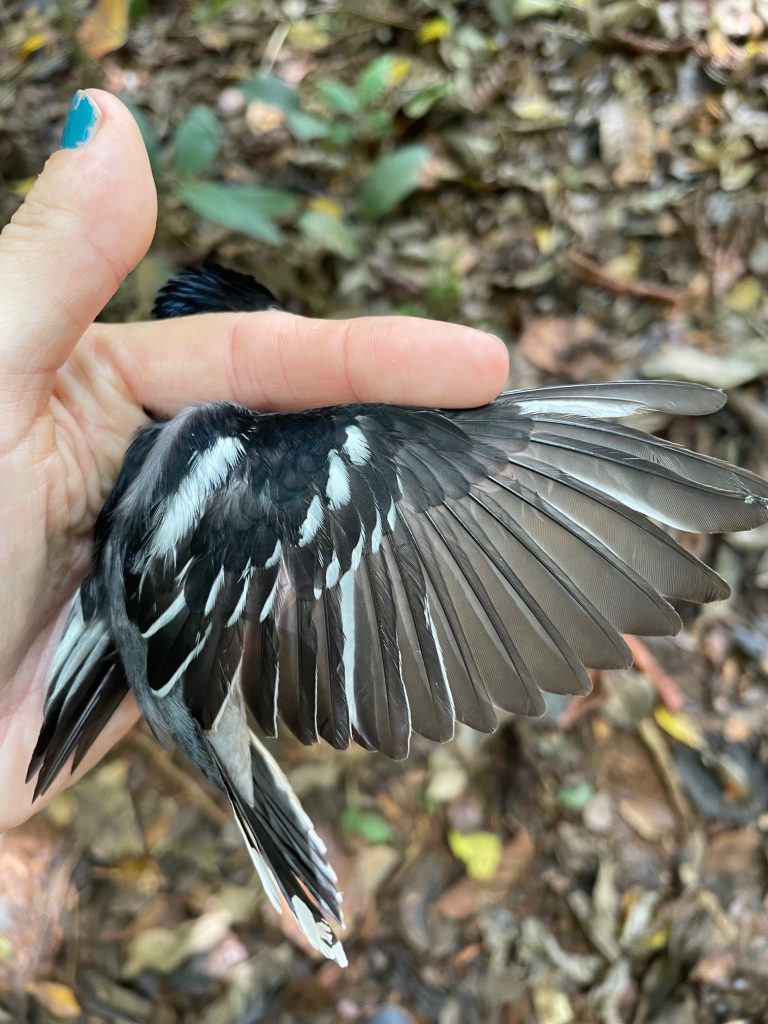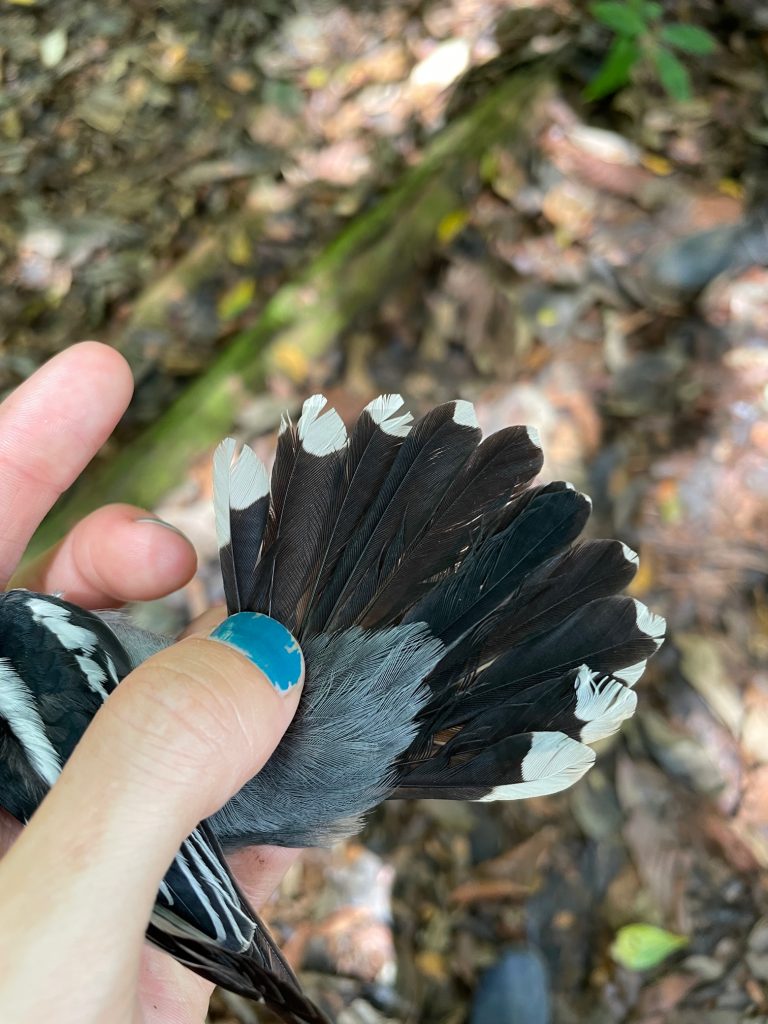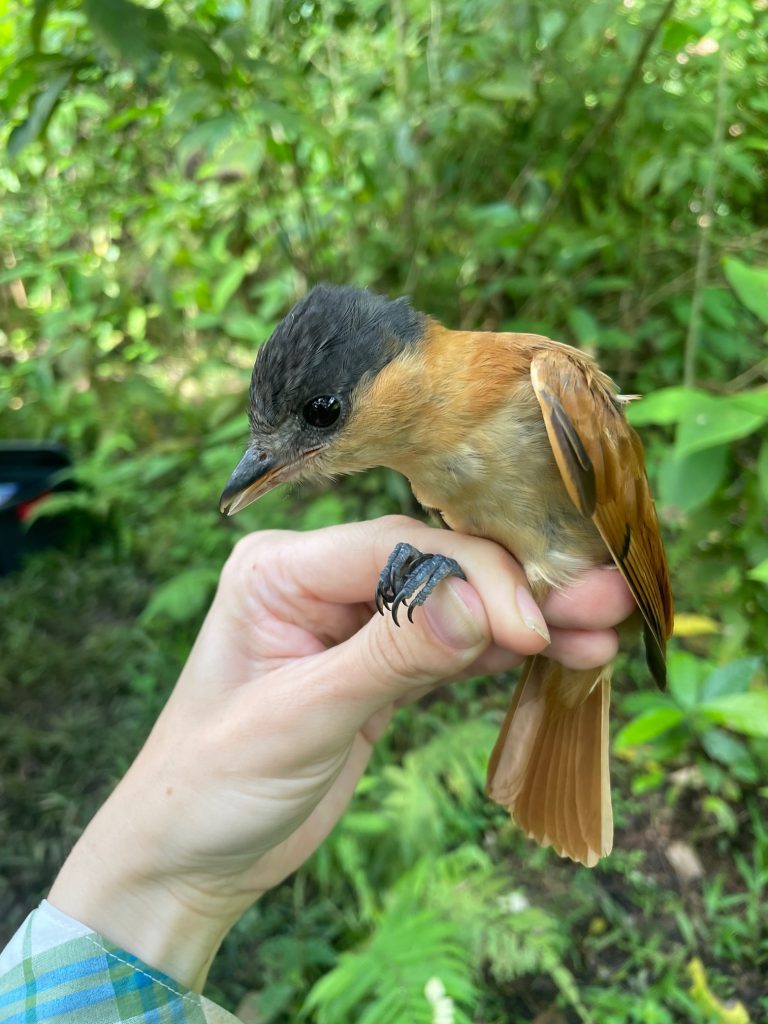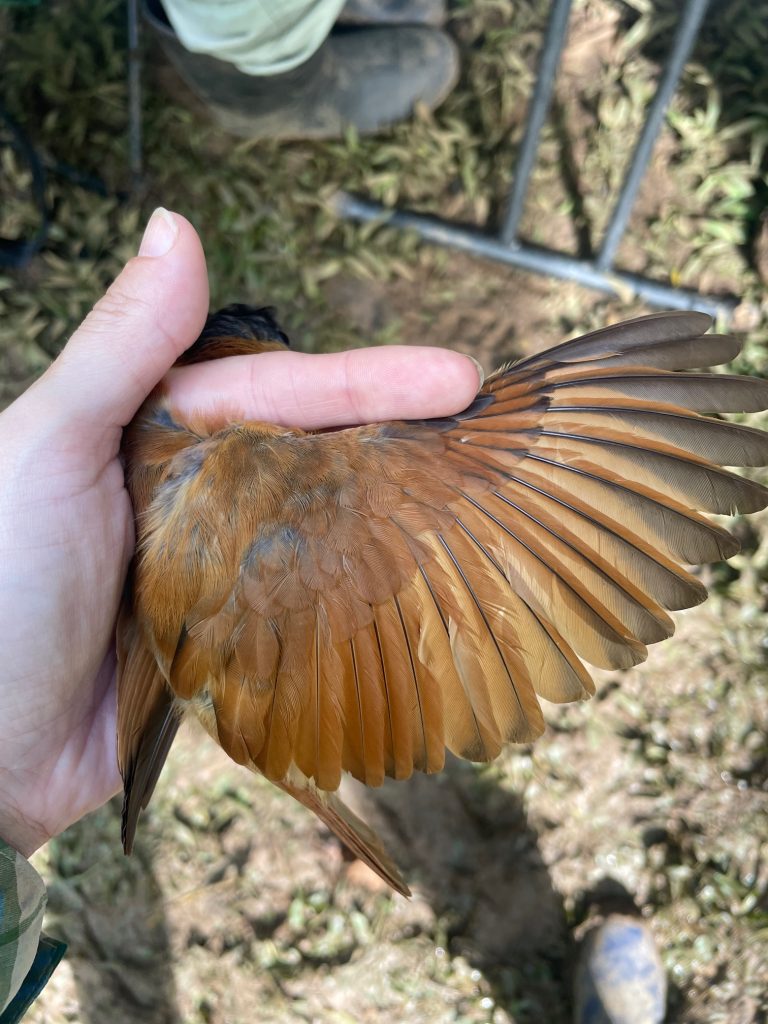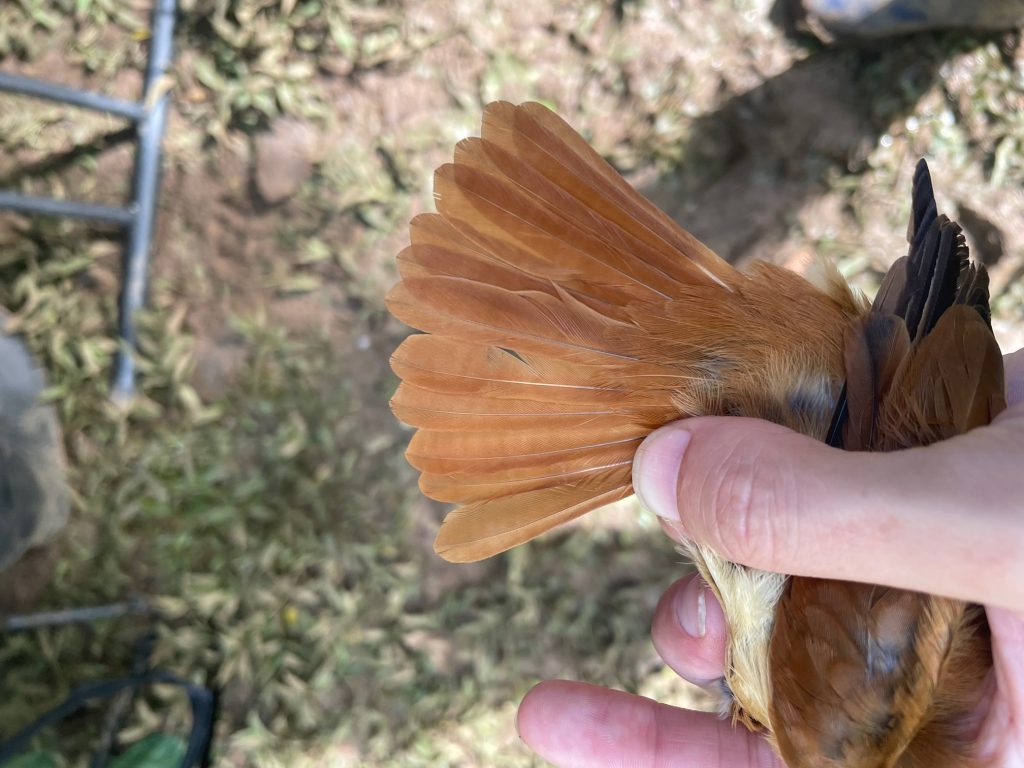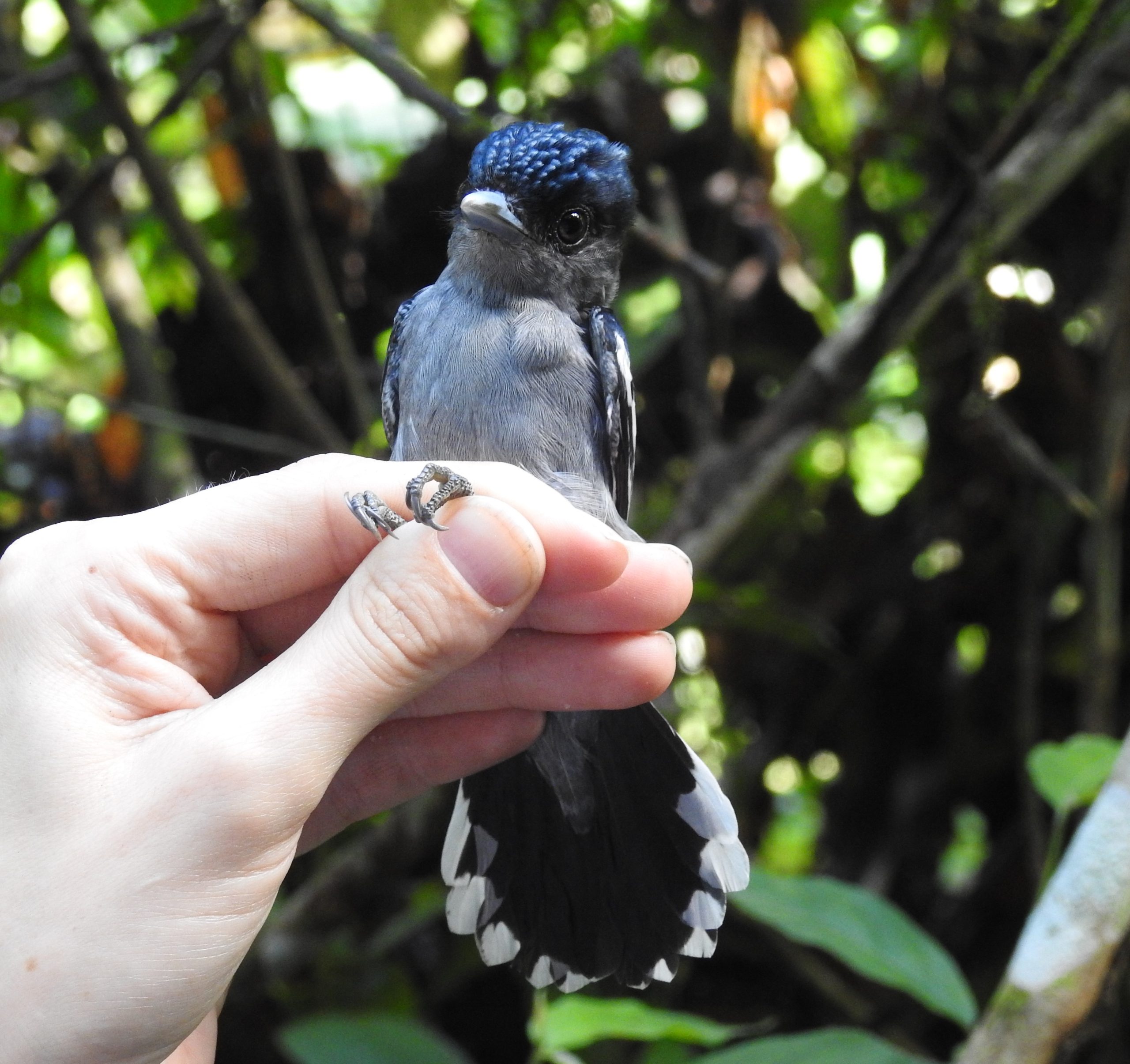
This black beauty softly floats around the forest edges almost going unnoticed, but pay attention and its melodic song and he will pull you in.
White-winged Becard | Pachyramphus polychopterus | Family Tityridae
Citation: Kent Livezey, XC370170. Accessible at www.xeno-canto.org/370170.
Costa Rican Neotropical Resident Passerine
The Tityridae family has always been a bit perplexing because the bird species that are now placed there have been moved between the cotingas, manakins and flycatchers over the years. Now with DNA research it has become clear that this particular group of Neotropical birds does indeed belong to the family Tityridae. For Costa Rica this includes five species of becard, two species of tityra, the Northern Schiffornis and Speckled Mourner – to be exact. Apart from shared molecular DNA distinct from neighboring families, there are no defining “typical” characteristics with members of this family other than the fact that they have largish, flattish heads. In fact, it is the size of their head that gives them their Costa Rican Spanish name “cabezon” which literally means “big-headed”.
Alexander F. Skutch published his account of the ‘Life History of the White-winged Becard’ in 1954 in The Auk (now called Ornithology). Back when his work was published, the becard was part of the Cotinga family. The male and the female are so morphologically different that she looks like she belongs with the flycatchers. Indeed, I likely mistook her to be a flycatcher in my early days in Costa Rica.
The becard has an extensive range from Guatemala down to Amazonian Brazil. In Costa Rica it’s found on both pacific and Caribbean sides of Costa Rica in open woodland areas and edge habitat more than forest interior. Over the many years of meticulous observation of the White-winged Becard in Costa Rica, Skutch found that they dwell “well up in the trees” as cotingas (and tityras) do, but they have been seen from mid-level to the upper canopy. However, in our MoSI bird banding program we have mist-netted and banded several male White-winged Becards that fell into our ground nets that only reach up three meters high indicating they do spend time in the understory. We have also observed them many times over the years feeding alone or as part of a mixed species flock on fruiting plants low to the ground. We never banded a female becard in our first two years of banding, that is until this spring. You can see her here on this page!
White-winged Becard breeding period is during the wet season starting when the weather begins to cool down in April and goes until August just prior to the onset of the heavy rains of September and October. The female builds a large globe-like nest (6” tall x 7” wide) with the entrance on the side. usually very high up in the canopy of isolated trees out on slender branches and very well covered. Ingeniously, she also places chicken feathers on top of the nest likely to insulate and keep water out. Some nests are even located near wasp nests to protect them predators, a behavior common in tropical birds. All of this is from Skutch’s years of observation, of course!
Skutch also noted that the female builds the nest without any help from her mate, but he stays close by keeping watch and will drive away intruders with a loud clack of his bill. During the incubation period ~18 days, particularly in the mornings, he sits nearby the nest and sings softly or just preens. When he wants to go feed, he calls her out of the nest and then later escorts her back. Only the female incubates, her tail permanently bent to one side after spending long periods sitting in her nest. Once the chicks hatch the male feeds the chicks as frequently as the female while still maintaining his duty as watchman. The clutch is 2-4 eggs (on average 3).
The White-winged Becard is a Suboscine (non-songbird) in the Tyranni suborder of Passerine birds. This means they have different anatomy in their syrinx muscles and don’t produce the complex songs of oscine songbirds. Young becards sometimes imitate adults by producing a soft subdued version of the adult song from the nest, a rarity that a true oscine songbird doesn’t do, especially with more complex songs and shorter nesting periods.
Nest predation is high as is common in the tropics. Because nests are so high, predetors often come from above, in particular the parasitic Piratic Flycatcher (Legatus leucophaius) by throwing out the becard eggs and occupying the nest for themselves. The Yellow-throated Toucan (Ramphastos ambiguous) is not without guilt as it will destroy a nest in search of its contents, but that practically goes without saying.
Much of this summary writeup comes from the great breadth of work done by Alexander Skutch in the early part of the last century. I wanted to bring this to you because it is the only research done directly on the White-winged Becard to date (apart from Boseman’s 2016 note on vocalizations) with hours and hours of observation that he made throughout the years from his home in the central valley of San Ysidro, Costa Rica. I want to pay tribute to this vast work of which the White-winged Becard is only one of many species he studied! Thank You.
